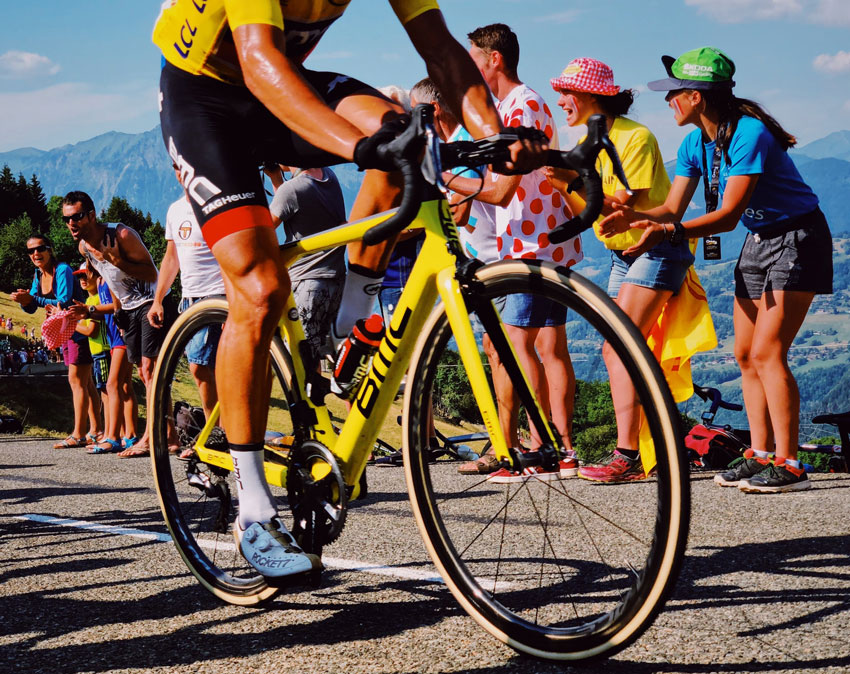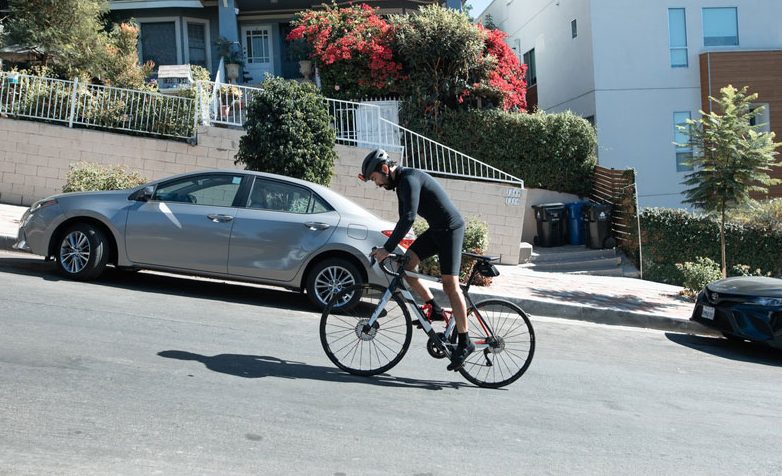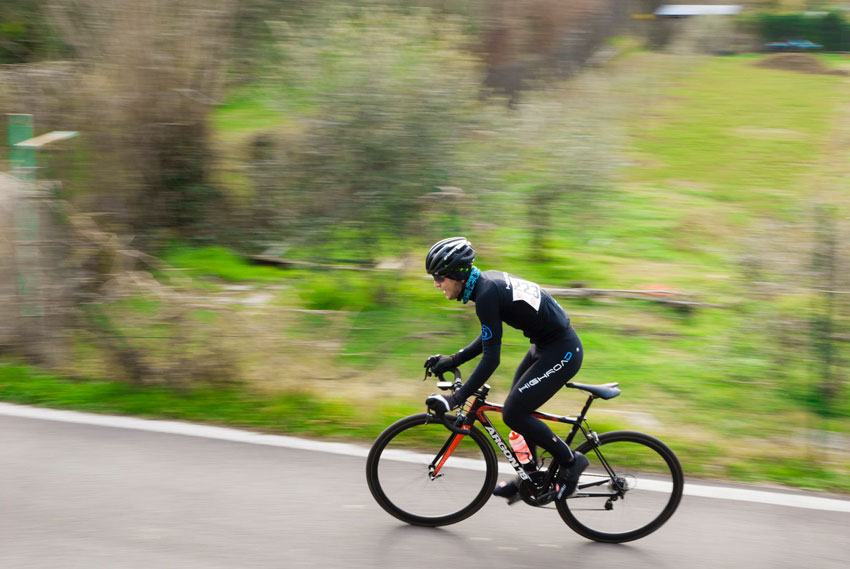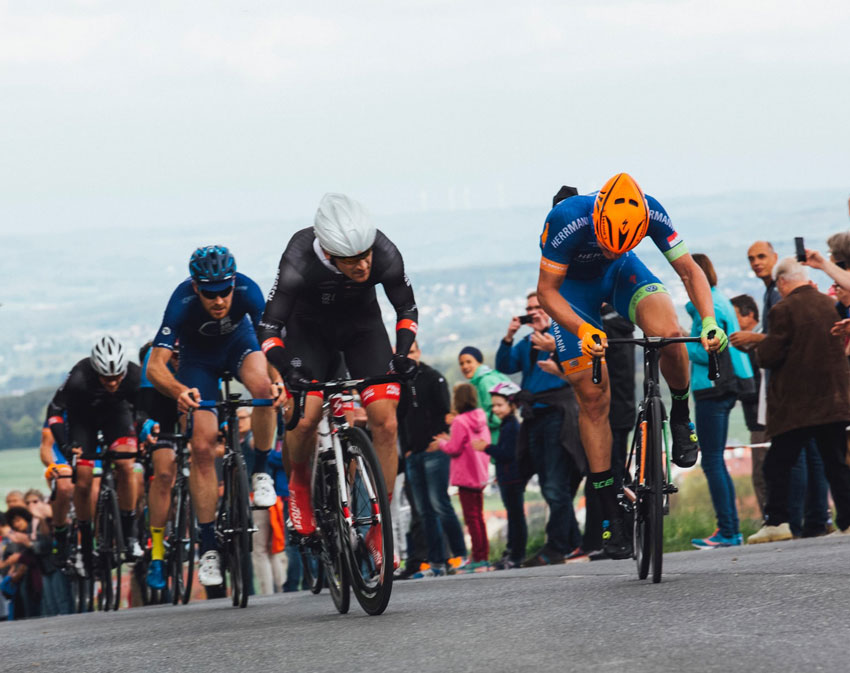Climbing Tips and Tricks—How to Climb Hills Faster

Hill climbing has long been the ruler by which many cyclists measure their worth. The popularity of extreme hill climbing was recently thrust into the spotlight with Stava’s ‘King of the Mountain’ (KOM) feature, wherein cyclists can compete against each other to climb some of the world’s toughest hills in the fastest time.
Some of the toughest hill climbs typically range between a 15% to 20% gradient, although the Guinness World Record holds the steepest hill in the world at 34.8%. That’s Baldwin Street, in Dunedin, New Zealand, which recently claimed the title back from Harlech street in Ffordd Pen Llech, Wales.
While gradient is one critical measure of hills, distance is equally as important—and that’s where the real challenge comes in. Sure, Fargo Street in Los Angeles is a tough 100 meters considering the 34% gradient, but how about Ticlio Pass in Peru, a hill that covers 96.6km and rises to 3,740 meters?
If you hope to achieve record-breaking times on these climbs and become King of the Mountain (KOM), you’ll need some serious hill training tips and tricks. Find our top advice below!
Biking Hills Faster—Training and Fueling Do’s & Don’ts
Whether you’re a beginner or a pro, the following training tips will help strengthen your legs, increase your oxygen intake, and improve your hill-climbing.
However, knowledge is only the start—if you really want to beat those KOMs on Strava, prepare yourself for months of dedicated training.
Hill repeats

Hill repeats are the most obvious and effective way to improve your hill-climbing abilities. Find a hill nearby that isn’t overly steep and ideally features a few variations in gradient. A typical hill will start off between 8 to 10%, flattening out slightly in the middle and ending with the steepest section up to a 12% gradient.
When starting out, don’t choose a hill that’s too long. If you can get to the top in about two to three minutes, that’s perfect.
Now, do a couple of test laps and make marker points at convenient spots on the top and bottom for recording your sprints. When you’re rested and ready, enter the hill at a decent pace, take a breather on the flat section, and then hit a flat-out sprint for the final section.
Try to do this six to eight times (or until you’re exhausted), recording your times on each climb to gauge your improvement.
Leg training exercises
Cyclists are typically a skinny bunch, so if you’re struggling on hills you might need to do some leg exercises. Fortunately, most leg exercises can be done in the comfort of your own home. Follow this routine for a good mix of glute, quad, and calf muscle training:
- Calf raises
Most cyclists already have killer calf muscles but it doesn’t hurt to give them that extra kick. Stand with the balls of your feet on a book or small step and start off with 3 sets of 30, ideally building up to 3 sets of 50. If this is too easy for you, consider doing single-leg calf raises.
- Squats
Squats are a great all-around exercise that everyone should do regularly. Not only do they build your quads, but they strengthen your core, improve hip flexibility and tighten your glutes. Start off with 3 sets of 20 and increase as needed.
- Lunges
Like squats, lunges improve your quads and glutes but also help to stretch out your hamstrings and improve your balance. They’re an excellent accompaniment to squats. Start with 3 sets of 20 and increase as needed.
These are the basic leg exercises to improve your hill-climbing, but you can improve on them even more by adding jumping squats and walking or jumping lunges.
Change pace
Although it’s best practice to maintain a steady pace while hill-climbing, changing pace during training is good for cardio and muscle building. Try breaking out halfway up the hill and sprinting to the top, or sprinting the first half before dropping into a slow slog for the end.
This up and down change of pace improves your fast-twitch muscles fibers and increases anaerobic conditioning. It also helps ready you for any situation, as you never know what might happen during a race.
Eat a balanced diet

This should go without saying, but a balanced diet is a key component of any decent training regime. Without the right amount of vitamins, minerals, and protein to support your body’s recovery, your training will be all for nothing.
Try to avoid protein shakes as these are often high in sugar and rather go for good quality meat, beans, and greens.
Light meats like fish and chicken are a perfect low-fat way of feeding muscles, while a good portion of pasta or rice is a good source of carbohydrates and post-workout glycogen replacement. Try to aim for at least 50% fruit and vegetables, and if you’re vegetarian, pack in extra broccoli, tofu, spinach, and legumes for added protein.
Fueling on the bike
Although every cyclist needs lots of water, the other types of fuel you use while on the bike largely come down to preference. Some cyclists find they need the extra boost of gels and energy bars, while others stick purely to electrolyte drinks and water.
On a big hill in hot weather, you’re going to need three to four liters of water, so make sure you plan for an adequate hydration strategy. Remember to also drink more water before starting out, and fuel up on a mix of oats, nuts, and fruit for breakfast.
While gels and energy bars promise a sugary burst of power, which is why they are handed out in musette bags during races, many people find they cause stomach pain or diarrhea. Make sure to test what works best for you before a race and never try something new for the first time on the day.
D-Day Tips and tricks
Training will only get you so far—if you really want to break ahead of the peloton on race day, you’ll need to incorporate these tips and tricks into your cycling routine.
Stay seated

Many cyclists make the mistake of standing up too soon or too often on hill climbs, when in fact staying seated is the most energy-efficient way of climbing.
Sometimes you have no choice but to stand on steep ascents, but doing so quickly burns vital glycogen stores and leaves your muscles exhausted. Try to stay seated as long and as often as possible, reserving your bursts of standing energy for emergencies only.
Take advantage of the brow
If you really want to smash the competition and get an advantage on race day, learn to beat them at their own game. Even some of the best hill climbers fall into the trap of taking a rest at the brow of the hill, freewheeling for a few seconds before changing up gears to hit the downhill.
These few seconds are the perfect opportunity for you to immediately engage top gear and overtake the leading hill climber!
Take it easy
This may sound counterintuitive, but it’s important to take it easy on hill climbs. If you go into the hill anxious or over-excited, you will burn through your energy too quickly.
Relax in the knowledge that you’ve done sufficient training for this hill climb and you will work your way to the top, one slow pedal stroke at a time. A calm and focused mind is the key to summiting the highest of mountains.
Visualize the summit
Any cyclist that’s climbed back-breaking hills like Mont Ventoux in France or Stelvio in Italy will tell you about the importance of visualizing the summit.
As your energy fades and your will to continue falters, you often need to rely on pure mind power alone to carry you to the top. Some cyclists even visualize themselves as feathers being blown up the mountain by a breeze, or pushed up by the hand of God. Whatever it takes to keep the legs turning and get you to the top!
Best Practices to Keep in Mind
The following best practices should be applied during all hill climbs, whether you are just training or competing. The training and positioning tips remain the same for any distance hill climb, but there are also a few best practices you can apply when climbing short, moderate, and long hills.
Maintain proper form

When hill climbing, it’s critical to maintain proper form on the bike. Don’t clench your body going into the hill—stay relaxed, keep calm and ride into the hill at a steady pace.
Square your shoulders and face forward, keeping your back set at a straight angle and your legs moving at a steady cadence. Have your chest open for maximum oxygen, arms loose, and weight centered over the bottom bracket.
Unless it’s a very short hill, don’t race into it or you will fizzle out of energy before the top. Go in with a strong focus and your mindset on the eventual goal: reaching the top. Remember: slow and steady wins the race, especially on long hill climbs.
Calculate your Watts/KG
Many cyclists don’t pay attention to their watts per kilogram (w/kg), which is a measurement that defines how much power you put out relative to your weight. However, when it comes to hill climbing, w/kg is everything! The easiest way to improve your w/kg is to reduce weight, either on the bike or on yourself.
However, taking the time to measure your various w/kg output based on different intervals of 5 seconds, 1 minute, 5 minutes, and FTP will help you see where you need to improve your training. There are some nifty tools and calculators online to help you gauge your w/kg, and doing so can really make a difference when hill training.
Of course, the best way to keep track of your w/kg, measure your FTP, and do structured training is by cycling with a power meter.
Cadence for medium climbs
A steady cadence is the key to cracking most medium-distance hill climbs. Entering at speed will just burn unnecessary energy, so enter the climb in the correct gear so that can pedal steadily without standing up.
A good, steady cadence of around 90 rpm is ideal for most cyclists on a medium gradient. If the gradient steepens or you get tired, make sure to shift the gears before it becomes difficult—otherwise, you could slow down and lose your pace.
Speed for short climbs

Usually, the best way to tackle a short, steep climb is to enter at speed and throw your weight into it. If you get enough momentum, it should carry you through to the top of the hill without the need for any extreme effort.
However, you should first ensure you are good at gauging the length of hills from a distance. If you get it wrong and run out of speed before the top, it’ll be difficult to regain a solid, hill climbing cadence.
Focus on long climbs
Focus is the number one trick to killing a hill climb. The longer the climb goes on, the harder it gets and if you let yourself succumb to the struggle, you’re done.
The only way to push through to the end is to dedicate a solid and unrelenting focus on maintaining your pace, pushing down on each pedal rotation, and not stopping—no matter what!
Read Next
Best Road Bikes to Use for Climbing
How to Complete Your First Century Ride — Crucial Tips for Beginners


